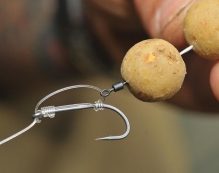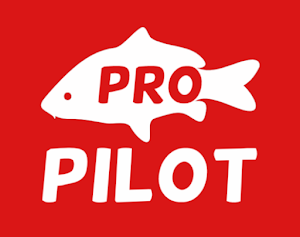How to Tie a D Rig for Carp Fishing
Carp fishing is an art and a science, and the D rig is one of the most effective and versatile rigs you can use. It’s known for its excellent hooking potential and effectiveness with pop-up baits. This comprehensive guide will walk you through the process of tying a D rig, explain when and why to use it, and provide tips on getting the most out of this setup.
Table of Contents
- Introduction to the D Rig
- Materials Needed
- Step-by-Step Guide to Tying a D Rig
- Preparing the Hooklink
- Tying the Knotless Knot
- Forming the "D" Loop
- Attaching the Bait Screw or Rig Ring
- Completing the Rig
- When and Why to Use a D Rig
- Tips for Effective Carp Fishing with a D Rig
- Common Mistakes and How to Avoid Them
- Advanced Techniques and Variations
- Maintenance and Care for Your D Rigs
1. Introduction to the D Rig
The D rig is named for the distinctive "D" shape formed by the loop of the hooklink material behind the hook eye. This loop allows for improved bait presentation and a more effective hooking mechanism. The D rig is particularly effective for pop-up baits, ensuring that the bait is presented off the bottom, making it more attractive and accessible to carp.
2. Materials Needed
To tie a D rig, you will need the following materials:
- Hooklink Material: Fluorocarbon is preferred for its stiffness and low visibility underwater.
- Hooks: Wide gape hooks are ideal. The size of the hook depends on the size of the bait and the target carp.
- Bait Screw or Rig Ring: To attach the bait.
- Bait: Typically pop-up boilies.
- Scissors or Snips: For cutting the hooklink material.
- Knot Puller Tool: Helps in securing knots tightly.
- Lighter or Baiting Needle: For certain knot types and to melt tag ends.
3. Step-by-Step Guide to Tying a D Rig
Preparing the Hooklink
- Cut the Hooklink: Start by cutting a length of hooklink material. Around 12-15 inches is a good starting point.
- Thread the Hook: Thread one end of the hooklink through the back of the hook eye, ensuring it extends past the bend of the hook by a few inches.
Tying the Knotless Knot
- Position the Hooklink: Hold the hook and hooklink so that the hook point is facing upwards and the hooklink is positioned along the shank.
- Wrap the Hooklink: Make 6-8 tight wraps around the shank of the hook, moving towards the bend. Ensure the wraps are neat and even.
- Secure the Knot: After completing the wraps, thread the end of the hooklink back through the hook eye from front to back. Pull tight to secure the knot.
Forming the "D" Loop
- Form the Loop: With the remaining length of the hooklink, form a small loop extending from the hook eye to the bend of the hook. This will create the "D" shape.
- Secure the Loop: Pinch the loop to maintain its shape and position. Then, take the free end of the hooklink and wrap it around the shank once or twice, close to the hook eye.
Attaching the Bait Screw or Rig Ring
- Add the Bait Screw or Rig Ring: Slide the bait screw or rig ring onto the loop, ensuring it moves freely.
- Close the Loop: Bring the free end of the hooklink back through the hook eye once more from front to back. Pull tight to secure the "D" loop and ensure it retains its shape.
Completing the Rig
- Trim the Excess: Trim any excess hooklink material close to the knot. Use a lighter or baiting needle to carefully melt the tag end, preventing it from fraying.
- Attach the Bait: Screw your chosen bait onto the bait screw or attach it to the rig ring.
- Final Adjustments: Check the length and shape of the "D" loop. Ensure the bait is positioned correctly and the rig is secure.
4. When and Why to Use a D Rig
The D rig is especially effective in certain conditions and for specific bait presentations. Here’s when and why you should consider using it:
- Pop-Up Presentations: The D rig excels with pop-up baits, ensuring they are presented just off the bottom.
- Clear Waters: Fluorocarbon hooklinks are less visible, making this rig ideal for clear water conditions.
- Cautious Carp: The D rig's mechanics and presentation can fool wary or pressured carp.
- Weedy or Silty Bottoms: The elevated bait presentation can avoid debris and ensure better visibility to carp.
5. Tips for Effective Carp Fishing with a D Rig
- Bait Choice: Use high-visibility or high-flavor pop-ups to attract carp.
- Rig Maintenance: Regularly check your rig for damage or wear and retie if necessary.
- Bait Presentation: Ensure the bait is buoyant enough to stay elevated but not too buoyant to lift the hook off the bottom.
- Sharp Hooks: Keep your hooks razor-sharp for better hooking efficiency.
6. Common Mistakes and How to Avoid Them
- Improper Knot Tying: Ensure all knots are tight and secure to prevent them from slipping.
- Incorrect Hook Size: Match the hook size to your bait and target fish size.
- Poor Loop Formation: Maintain the "D" shape loop for optimal bait movement and hooking potential.
7. Advanced Techniques and Variations
- Combi Rigs: Combine the D rig with other rig components for varied presentations.
- Adjustable Hair: Use adjustable hair rigs to vary the bait height.
- Hooklink Length: Experiment with different hooklink lengths based on fishing conditions.
8. Maintenance and Care for Your D Rigs
- Inspect Regularly: Check for frayed hooklink material or damaged hooks.
- Store Properly: Keep your rigs in a rig box to prevent tangles and damage.
- Replace When Necessary: Retie or replace rigs that show signs of wear.
By following these detailed steps and tips, you can tie an effective D rig and improve your carp fishing success. Practice makes perfect, so take your time to master each step and adapt the rig to your specific fishing conditions. Happy fishing!








190 Replies to “Tying a D rig and when to use it”
Inspiring story there. What occurred after? Take care!
Wow! This blog looks just like my old one!
It’s on a completely different subject but it has pretty much the same layout and design. Great choice of colors!
My page: testoprime
You made some really good points there. I checked on the web to find out more about the issue and found most individuals will go
along with your views on this website.
I was curious if you ever thought of changing the structure of your blog?
Its very well written; I love what youve got to say.
But maybe you could a little more in the way of content so people could connect
with it better. Youve got an awful lot of text for only having 1 or two images.
Maybe you could space it out better?
Heya fantastic website! Does running a blog like this require a large amount of work?
I’ve virtually no understanding of coding however I was hoping to
start my own blog in the near future. Anyways, if you
have any recommendations or techniques for
new blog owners please share. I know this is off subject however I just needed to ask.
Thank you!
Thanks for finally writing about > Tying a D rig and when to use it – Dan Eastes < Loved it!
Awesome site you have here but I was curious about if you
knew of any forums that cover the same topics discussed here?
I’d really like to be a part of online community where
I can get feedback from other knowledgeable individuals that share the same interest.
If you have any suggestions, please let me know.
Thanks!
Today, I went to the beach with my children. I found a sea shell and gave it to my 4 year old daughter and said “You can hear the ocean if you put this to your ear.” She put the
shell to her ear and screamed. There was a hermit crab inside and it pinched her ear.
She never wants to go back! LoL I know this is completely off topic but I had to tell
someone!
Inspiring quest there. What happened after?
Good luck!
I am extremely impressed with your writing talents and also with the layout in your weblog.
Is this a paid theme or did you customize it your self?
Either way stay up the excellent high quality writing, it’s rare
to peer a great weblog like this one today..